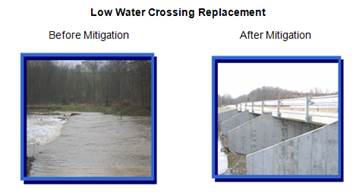 |
 |
 |
  |
Welcome to the Office of Emergency Management Web Page
Emergency Management Meetings are held the
third Thursday of every even numbered month.
Meetings are at 10:00 a.m. at a pre-selected restaurant
in Taney County & are followed by the County LEPC meeting.
The Office of Emergency Management maintains & annually
updates the Local Emergency Operations Plan
outlining multiple agencies responsibilities
during a disaster.
Taney County houses
it's own Homeland Security Response Team
funded through Federal Department of Homeland Security Grant money.
|

Click here to fill out the
2018 Hazard Mitigation Plan
Public Comment Survey
|
| What is the Taney County Hazard Mitigation Plan? |
The Taney County Hazard Mitigation Plan is a multi-jurisdictional plan that identifies major hazards (floods, thunderstorms, tornadoes, etc.) that impact Taney County and the jurisdictions within the County, and actions that can be taken to mitigate the negative consequences of those hazards.
This plan must be updated every five years and reviewed annually. This is a requirement of federal law. Any participating jurisdiction is then eligible to apply for funding through FEMA's Hazard Mitigation Grant programs. These grants can fund projects such as: flood buyouts, tornado safe rooms, low water crossing replacements, structure elevation, and retrofitting of existing buildings. |
 |
| |
| What is mitigation? |
| Mitigation is the effort to reduce loss of life and property by lessening the impact of disasters. In order for mitigation to be effective we need to take action now before the next disaster to reduce human and financial consequences later (analyzing risk, reducing risk, and insuring against risk). It is important to know that disasters can happen at any time and any place and if we are not prepared, consequences can be fatal. |
 |
| |
| Why is this important to me? |
Without mitigation actions we jeopardize our safety, financial security, and self-reliance. Disasters can happen at anytime and anyplace. Human and financial consequences are hard to predict.
What we can change is the way we act to reduce the effects of these natural events on our families, our homes, our schools, our places of worship and learning, and the whole community. Without taking action, we can be sure we'll get zero results, but by knowing the risks we face, and by taking appropriate action to reduce those risks, we'll significantly better our chances of surviving the event and recovering more quickly. |
| |
| What can I do? |
| Provide your input and participate in actions! Now is the opportunity to weigh-in on what hazards you view as a risk to your community and what actions should be taken to help mitigate negative impacts. Contact your local elected officials or the Southwest Missouri Council of Governments, the office facilitating the update of the plan, at MeganClark@MissouriState.edu to provide your comments. Visit www.smcog.org for a list of upcoming meetings. |
| |
| Want more information? |
FEMA and the Missouri State Emergency Management Agency has a great deal of information on hazard mitigation. Check out any of the following website for more details:
MOSEMA: Mitigation Management
FEMA: What is Mitigation? |

